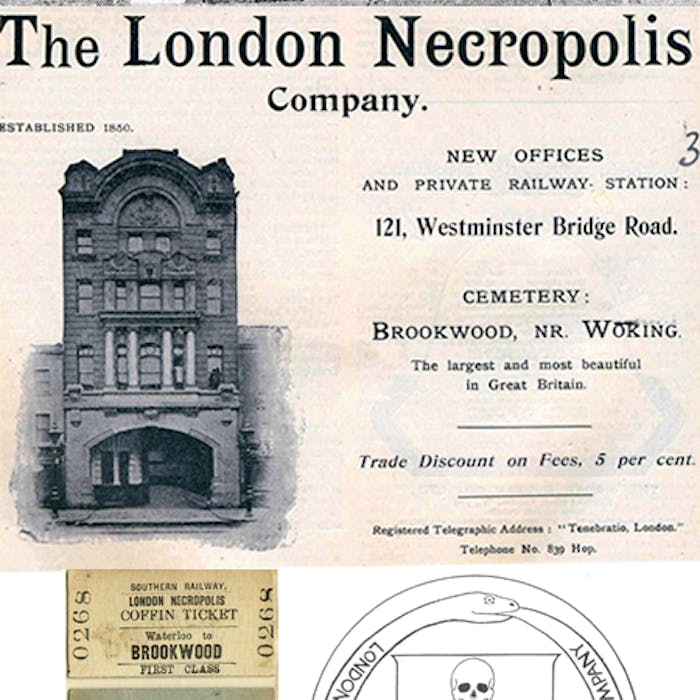
The London Necropolis Railway - the last journey
For 87 years, from 1854 until 1941, a bizarre train service - the London Necropolis Railway - ran an almost daily service from Waterloo Station carrying the dead out to Brookwood Cemetery, 23 miles south west from London in Surrey. It was the solution to a challenging problem - where to bury the bodies of those who had died.
In the 1800s, London needed to bury 50,000 dead people every year — but suitable cemetery space within the metropolis remained less than 300 acres.
A Royal Commission warned in 1842 that London’s burial grounds had become so overcrowded that it was impossible to dig a new grave without cutting through an existing one. Eventually Parliament shut the cemeteries of inner London to new burials and opened a series of large, suburban alternatives. Brookwood Cemetery alone comprised more than 1,500 acres, compared to just 218 acres of burial space within London. Nicknamed the London Necropolis, at one time it was the largest burial ground in the world.
The problem was how to get there, and it was solved by the special train service. The London Necropolis Railway, established for the purpose and with its own terminal facilities at Waterloo and Brookwood station, carried up to 2,000 bodies a year. Both the dead, and the living (mourners and visitors), were carried, segregated according to their class and religious persuasion, with special facilities to accommodate the coffins.
Brookwood Station had been opened three-quarters of a mile from the cemetery in 1864 to serve both the necropolis and the ‘normal’ train line.
In London, York Street station was constructed adjacent to Waterloo station as the departure point — just far enough from the normal commuter concourse to be discreet. Along with two entrance halls (one for the upper class, one for the middle and lower), waiting rooms and platforms, the station had its own mortuaries.
The regular necropolis service would depart at 11:40am, in time for the burial and funeral wake at one of the cemetery’s two train stations, with the train returning to London by 3:30pm.
Commercially the London Necropolis Railway was never as successful as the founders hoped. Many Londoners were resistant to laying their relatives to rest so far away from home and the rest of the family. The arrival of the motor hearse in the 1920s was a major blow. Finally, severe bomb damage in the Second World War brought an end to this unique railway of the dead, though the ornate frontage of the necropolis station remains at Waterloo, and plans were laid in early 2021 for it to be turned into flats.
Further reading
Links to external websites are not maintained by Bite Sized Britain. They are provided to give users access to additional information. Bite Sized Britain is not responsible for the content of these external websites.
